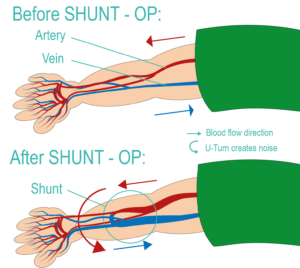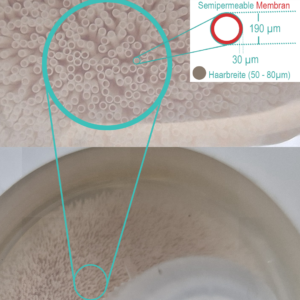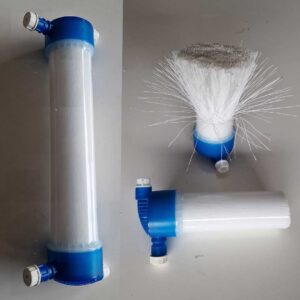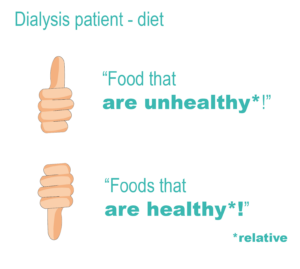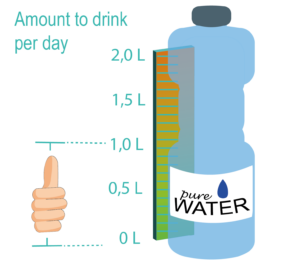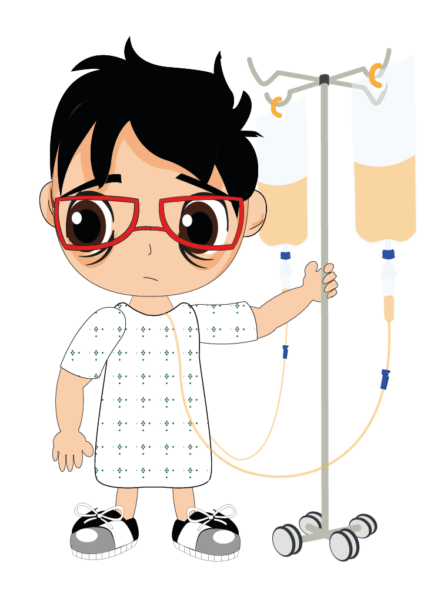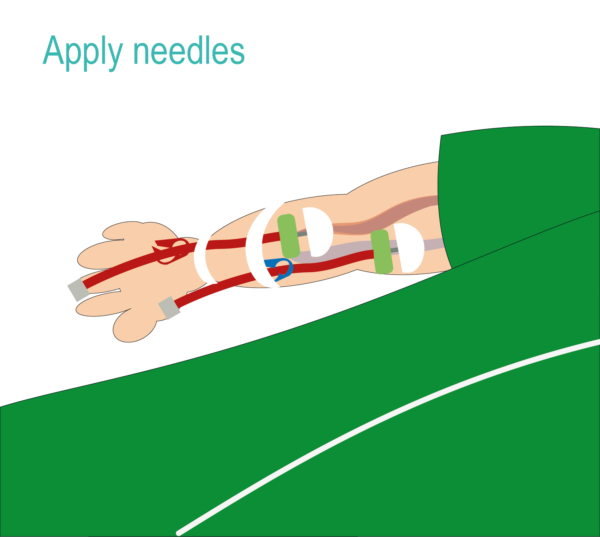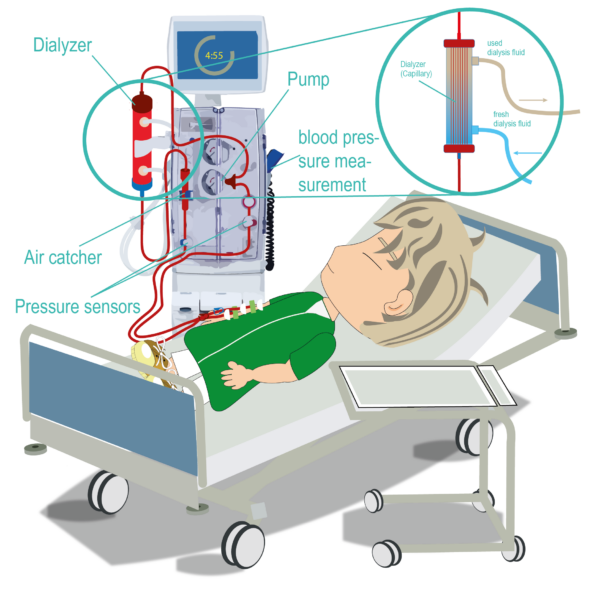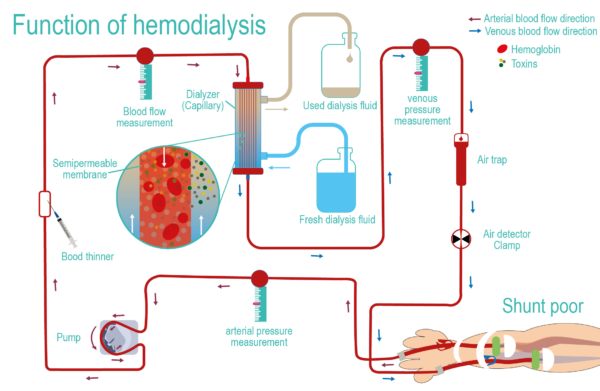-
Hemodialysis HD
-
Peritonealdialysis PD
In hemodialysis, the filtration is carried out extracorporeally and, conversely, in peritoneal dialysis, the peritoneum’s own peritoneum takes over the filter function.
More info:
Here we explain the function of hemodialysis HD, which is also divided into hemofiltration HF, hemodiafiltration HDF and hemoperfusion HP in acute poisoning. Hemodialysis is the most commonly used procedure in Germany with most patients in so-called “renal replacement therapy”.
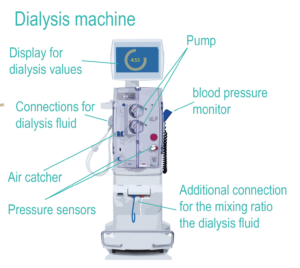
During hemodialysis, the blood is filtered using a dialysis machine (housing with measuring instruments, clamps, pumps and sensors, etc.), dialyzer (capillary filter element) with a tube system and the exchange solution (osmosis solution, electrolytes and bicarbonate, etc.).
In acute cases (or if this is not possible), the connection to the patient is achieved via a catheter on the carotid artery (Demers catheter, atrial catheter, etc.) or via the so-called shunt.
But remember: The kidneys carry out filtration and endocrine regulation continuously, but a dialysis patient is only allowed to undergo HD dialysis (Germany) 2x 4h to 3x 5.5h per week, depending on the progress of the disease. Nobody cares about endocrine regulation anyway, if any irregularities arise due to the 3-month blood collection rhythm. (Who makes these guidelines?). Nobody takes into account that the accompanying diseases flourish while waiting for a kidney transplant.
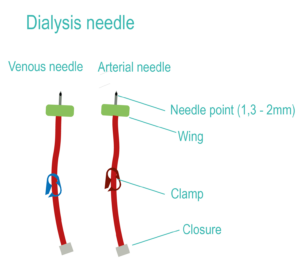
After “shunt maturation”, that is Expansion of the puncture vessels, will be every 2 days two needles (1.3 mm – 2 mm, which over time cause the puncture sites to mutate into wounds and aneurysms, which then also lead to stenosis) attached to these vessels (arterial and venous) and the blood then circulates on the machine’s hose system, driven by a Pump. This pumps the blood by rolling it on the specific location of the tube (elongated in a special shape/consistency). It presses the blood from the patient into the tube system past measuring sensors to the dialyzer. The total blood volume in this tubing system plus dialyzer is max. 300ml.
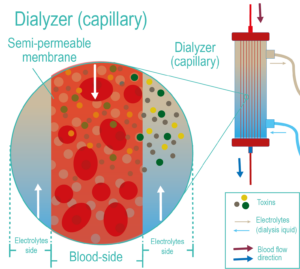
The dialyzer, which is connected to the hose system (so-called extracorporeal blood circulation), also has two connections. A liquid called dialysate, similar to the electrolyte solution, flows through this.
Fazit
Because this therapy only 4-5 hours is carried out every two days, collecting in the meantime Toxins (for dialysis patients, potassium, calcium, phosphate, etc. are toxins to an uncontrolled extent), urea and fluid in the human body (up to three liters of fluid and more on weekends if there is no self-restriction!).
Therefore, if a kidney transplant is no longer possible, it is desirable to aim for the longest possible duration of dialysis with a slow pumping speed and to obtain the best information/exchange in social networks about the long-term dialysis therapy.
Information and assistance on Facebook
